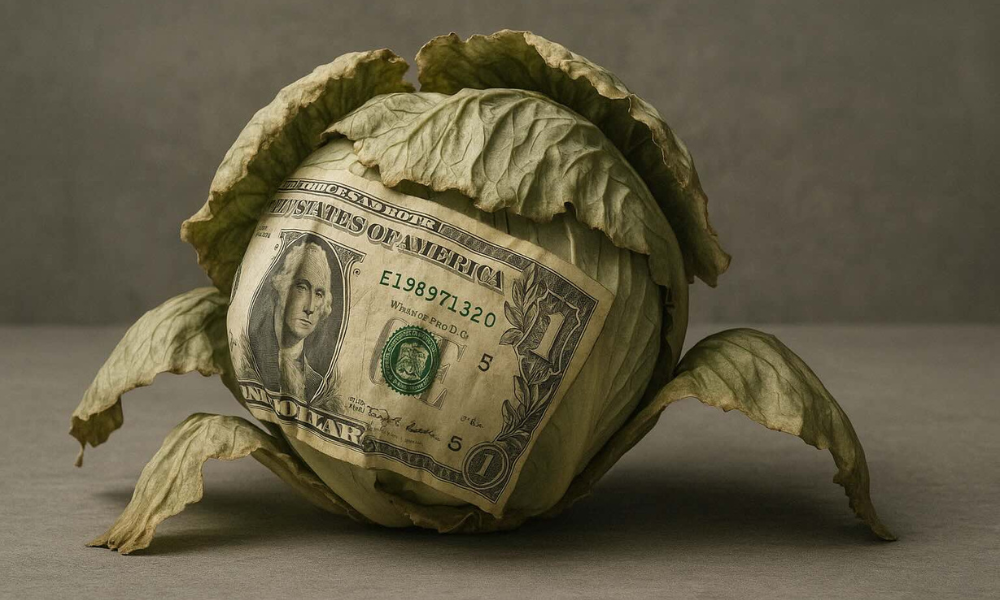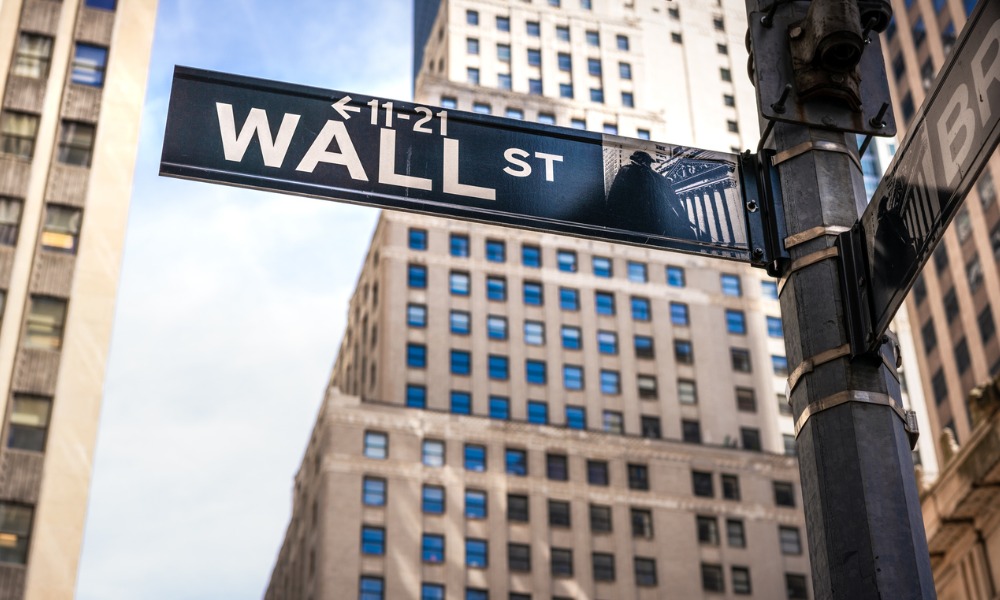As dollar tanks, alarm bells ring amid comparison to UK meltdown in 2022 – and that’s not exactly a ringing endorsement.

The U.S. dollar’s sharp descent is setting off alarm bells across global markets, with experts comparing the situation to the turmoil seen during the UK's 2022 "Trussonomics" episode.
And on that note, a neat segue into why the ringing endorsement from ex-British PM Liz Truss may not be all that fantastic a testimonial.
This weekend, the ex-PM wrote an editorial in the Australian Financial Review, praising the President’s “only viable strategy” of “flooding the zone” using shock and awe. Those who follow British politics will already know of Truss’s unbeaten record as the shortest serving PM in British history. Her 50 day ‘reign’ came to an abrupt end in 2022 as her Chancellor’s mini budget aimed to cut taxes without clear funding – and saw the pound plummet to its lowest ever against the US dollar ($1.033).
A British newspaper famously live-streamed a lettuce questioning which would wilt first. The lettuce won.
Those unpredictable trade policies from the Trump administration that Truss so much admires, are unsettling investors and fueling fears that the dollar’s privileged status in the global economy may no longer be assured.
After a fresh round of sweeping tariffs dubbed “Liberation Day” duties, the dollar's value has dropped dramatically, igniting speculation about long-term repercussions. The DXY index—a key measure of the greenback’s strength against major peers—plunged to a three-year low on Monday, down more than four percent since the tariffs were announced.
Economists warn that scenarios once deemed improbable—such as the dollar losing its central role in global finance—are now entering mainstream discussion.
“Extreme outcomes, such as reserve managers dumping Treasuries, the dollar losing some, or all, of its special status…, are no longer unthinkable,” said Jonas Goltermann, deputy chief markets economist at Capital Economics.
A parallel to Sterling’s 2022 crisis
The rapid depreciation of the dollar has triggered a flight from U.S. assets. Major global indices have suffered, with the Nasdaq shedding over 1,000 points and London’s FTSE 100 hitting a 13-month low. Hong Kong’s Hang Seng posted its worst daily drop in over two decades, falling more than 13 percent.
Goltermann noted the dollar’s unusual detachment from traditional indicators like interest rate differentials, drawing parallels to the British pound’s erratic behavior during Truss’s ill-fated mini-budget era.
“It is becoming increasingly obvious that the Trump administration’s policy approach is in some ways undermining the trust in U.S. institutions that underpins the dollar’s global role,” Goltermann added.
Ripple effects for global businesses
The dollar’s weakness is becoming a growing concern for exporters and central banks alike. Companies from Tokyo to Paris are facing dual pressures: U.S. tariffs that curb demand and stronger home currencies that squeeze overseas earnings.
The ICE U.S. Dollar Index has tumbled 8% this year, marking the worst start to a year since 1995. This decline has made foreign goods more expensive for American buyers, while trimming the value of U.S.-generated revenues for multinationals.
For example, Toyota may see profits take a hit as the yen strengthened significantly against the dollar. In Europe, luxury retailers such as LVMH and beverage giants like Campari are bracing for reduced earnings, according to analysts at UBS and Deutsche Bank.
“For exporters, you’re not getting the currency eroding some of the tariff impact for the end U.S. consumer,” Derek Halpenny of Japan’s MUFG said the WSJ.
Meanwhile, small exporters in niche sectors, like Scottish tweed or single-malt whisky producers, are grappling with tariffs and currency swings that threaten their U.S. market access.
“Dealing with a weaker dollar will certainly compound the challenge of trading with the U.S. over the coming months,” Margaret Macleod, CEO of Harris Tweed Hebrides told the Wall Street Journal.
Central banks brace for currency shock
The dollar's slide is forcing policymakers into action. The European Central Bank and Bank of Korea are expected to cut interest rates in a bid to rein in their rapidly appreciating currencies. The Swiss franc’s double-digit gain this year has even led some investors to anticipate an unscheduled move from Switzerland’s central bank to avoid deflation.
Japan has already paused its monetary tightening as volatility rises. Even China is letting the yuan drift lower to ease the pain of a punishing 145% tariff on exports to the U.S.—a levy Beijing countered with its own 125% duties.
Despite efforts to stabilize the situation, economists are wary of the broader fallout.
“Recent developments are genuinely extraordinary and could play out in a number of ways, many of which would be less benign,” Goltermann said to City AM.
Investors exit U.S. equities as confidence wanes
Sentiment in financial markets has turned sharply against the dollar and U.S. stocks. A Bank of America global surveyof fund managers revealed that 61% expect the dollar to weaken further in the next 12 months—the highest bearish reading since 2006. Meanwhile, a record share of investors are cutting exposure to American equities.
Market volatility peaked after Trump's tariff salvo earlier this month erased over $5 trillion from the S&P 500’s value in just three days. Although stocks rebounded slightly after some duties were suspended, the damage to investor confidence appears lasting.
The report noted a significant shift in asset allocation, with capital flowing toward defensive sectors, bonds, and gold, displacing tech stocks as the favored investment.
“The problem is that three minutes from now we could get a headline [out of the White House] which may leave us relatively better or worse than where we are right now. [Investors] don’t want to look like idiots,” said the global head of cash equity trading at a European bank.
What’s Next for the Dollar?
While Capital Economics predicts the U.S. will avoid a full-blown recession, it expects only modest policy clarity in the near term. The Federal Reserve is projected to hold interest rates steady, potentially offering some support for the beleaguered currency.
Still, risks abound. A prolonged trade conflict, weakened trust in American leadership, and a crumbling investor base could reshape the dollar’s role in global finance.
As markets remain gripped by uncertainty, few are betting on a swift rebound.



